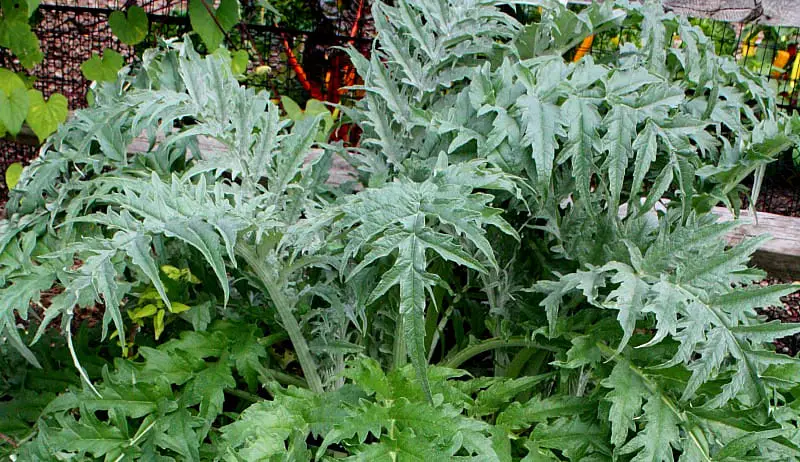Introduction
Cardoon (Cynara cardunculus), a close relative of the artichoke, is a perennial vegetable native to the Mediterranean region. Known for its striking appearance and unique flavor, cardoon is an underappreciated gem in the world of gardening. Its tall, silvery-green foliage and vibrant purple flowers can add aesthetic appeal to any garden, while its edible stalks offer a culinary delight. This informative guide will provide you with all the essential tips and techniques for successfully cultivating cardoon, ensuring a bountiful harvest.
Understanding Cardoon: Plant Characteristics and Requirements
Cardoon plants are hardy perennials that can reach heights of up to five feet. They thrive in warm, temperate climates but can also be grown as annuals in cooler regions. The plant’s large, spiny leaves and tall flower stalks make it a striking addition to any garden. Cardoons prefer well-drained soil with a pH level between 6.5 and 7.5. They require full sun exposure to grow optimally and should be planted in an area that receives at least six hours of direct sunlight daily.
Choosing the Right Variety
There are several varieties of cardoon, each with its unique characteristics. The most common types include ‘Gigante di Romagna,’ known for its large, tender stalks, and ‘Gobbo di Nizza,’ which has a sweeter flavor. When selecting a variety, consider your climate, soil type, and intended use of the plant. Some varieties are better suited for culinary purposes, while others are grown primarily for ornamental use.
Planting Cardoon: A Step-by-Step Guide
- Soil Preparation: Start by preparing the soil in your garden. Cardoons require rich, well-drained soil. Amend the soil with organic matter such as compost or well-rotted manure to improve fertility and drainage.
- Sowing Seeds: Cardoon seeds can be sown directly in the garden or started indoors. If starting indoors, sow seeds in pots or trays about six to eight weeks before the last expected frost. Transplant seedlings into the garden when they are about four inches tall.
- Spacing: When planting cardoon seeds or seedlings in the garden, space them about three to four feet apart to allow for adequate growth. Cardoons can spread quite wide, and proper spacing will ensure they have enough room to thrive.
- Watering: Cardoons require regular watering, especially during dry periods. Water the plants deeply to encourage root development, but avoid waterlogging the soil. Mulching around the plants can help retain moisture and suppress weeds.
Maintaining Healthy Cardoon Plants
- Fertilization: Cardoons are heavy feeders and benefit from regular fertilization. Apply a balanced, slow-release fertilizer or a high-nitrogen fertilizer every four to six weeks during the growing season to promote vigorous growth.
- Pruning: Regular pruning is essential to maintain healthy cardoon plants. Remove any yellowing or damaged leaves to prevent disease and encourage new growth. Pruning also helps to improve air circulation around the plants.
- Pest and Disease Management: Cardoons are generally resistant to pests and diseases, but they can occasionally be affected by aphids, slugs, or fungal infections. Monitor your plants regularly and take appropriate measures, such as using organic insecticides or fungicides, to control any infestations.
Harvesting and Using Cardoon
- Blanching: To enhance the flavor and tenderness of cardoon stalks, blanch them about three to four weeks before harvest. This involves wrapping the stalks with opaque material, such as burlap or cardboard, to exclude light. Blanching reduces bitterness and makes the stalks more palatable.
- Harvesting: Cardoon stalks are ready for harvest when they reach a length of about 12 to 18 inches. Use a sharp knife to cut the stalks at the base. Be sure to wear gloves when handling the plants, as the leaves can be quite spiny.
- Culinary Uses: Cardoon stalks can be used in a variety of dishes, similar to how you would use celery or artichokes. They can be boiled, steamed, fried, or added to soups and stews. The unique flavor of cardoon adds a delightful twist to traditional recipes.
Common Challenges and Solutions
- Poor Germination: Cardoon seeds can sometimes have low germination rates. To improve success, soak the seeds in water for 24 hours before planting and ensure they are kept consistently moist during the germination period.
- Yellowing Leaves: Yellowing leaves can be a sign of nutrient deficiency or overwatering. Ensure your plants are receiving adequate nutrients and adjust your watering practices as needed.
- Slow Growth: If your cardoon plants are growing slowly, they may not be receiving enough sunlight or nutrients. Check their growing conditions and make any necessary adjustments to provide optimal care.
Conclusion
Cultivating cardoon can be a rewarding experience for both novice and experienced gardeners. With its striking appearance and unique flavor, cardoon is a versatile plant that can enhance both your garden and your culinary creations. By following the tips and techniques outlined in this guide, you can ensure a successful cardoon harvest and enjoy the many benefits this remarkable plant has to offer. Happy gardening!


